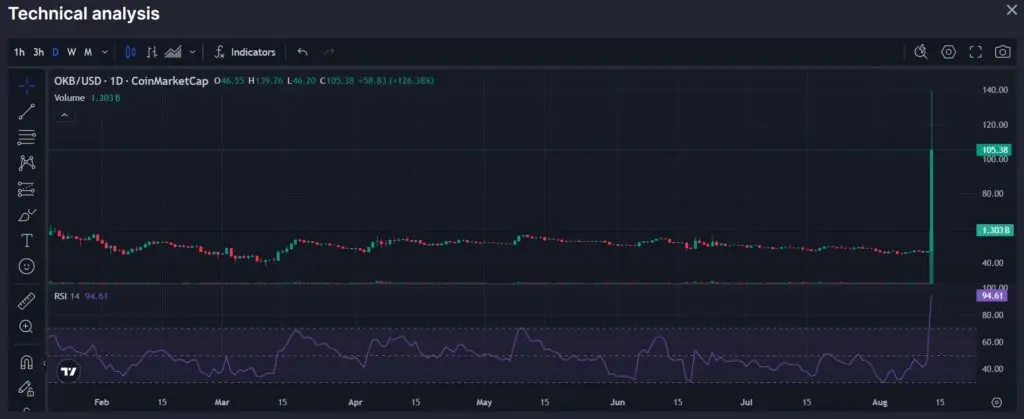- Topic
12k Popularity
206k Popularity
30k Popularity
178k Popularity
4k Popularity
- Pin
- 🎤 Cheer for Your Idol · Gate Takes You Straight to Token of Love! 🎶
Fam, head to Gate Square now and cheer for #TokenOfLove# — 20 music festival tickets are waiting for you! 🔥
HyunA / SUECO / DJ KAKA / CLICK#15 — Who are you most excited to see? Let’s cheer together!
📌 How to Join (the more ways you join, the higher your chance of winning!)
1️⃣ Interact with This Post
Like & Retweet + vote for your favorite artist
Comment: “I’m cheering for Token of Love on Gate Square!”
2️⃣ Post on Gate Square
Use hashtags: #ArtistName# + #TokenOfLove#
Post any content you like:
🎵 The song you want to he - ✈️ Gate Square | Gate Travel Sharing Event is Ongoing!
Post with #Gate Travel Sharing Ambassadors# on Square and win exclusive travel goodies! 💡
🌴 How to join:
1️⃣ Post on Square with the hashtag #Gate Travel Sharing Ambassadors#
2️⃣ You can:
Share the destination you most want to visit with Gate Travel (hidden gems or hot spots)
Tell your booking experience with Gate Travel (flights/hotels)
Drop money-saving/usage tips
Or write a light, fun Gate Travel story
📦 Prizes:
🏆 Top Ambassador (1): Gate Travel Camping Kit
🎖️ Popular Ambassadors (3): Gate Quick-Dry Travel Set
🎉 Lucky Participant - 🎉 Hey Gate Square friends! Non-stop perks and endless excitement—our hottest posting reward events are ongoing now! The more you post, the more you win. Don’t miss your exclusive goodies! 🚀
🆘 #Gate 2025 Semi-Year Community Gala# | Square Content Creator TOP 10
Only 1 day left! Your favorite creator is one vote away from TOP 10. Interact on Square to earn Votes—boost them and enter the prize draw. Prizes: iPhone 16 Pro Max, Golden Bull sculpture, Futures Vouchers!
Details 👉 https://www.gate.com/activities/community-vote
1️⃣ #Show My Alpha Points# | Share your Alpha points & gains
Post your


OKB Skyrockets 200% As OKX Announces 65B Token Burn
OKB, a token linked to the OK Blockchain Foundation and OKX trading platform, rose by around 200% from a $46.58 low to a $139.76 high in the last 24 hours. This surpassed the cryptocurrency’s all-time high of $73.82 in March 2024 by 89%.
The token has settled at around $106 per unit by around 4:00 AM Thursday (UTC time) to a market cap of $6.4 billion. However, its trading volume continued to soar by over 16,000% as $1.4 billion worth of its supply moved across wallets and crypto exchanges.
OKB’s rapid rise on Wednesday coincided with the surprise announcement of OKX regarding its upcoming burn event on Friday. This came alongside several upgrades within the crypto trading platform’s ecosystem.
ADVERTISEMENT## The OKB Token Burn
According to OKX, it will execute a one-time burn tomorrow, August 15, to limit OKB’s supply to 21 million tokens. The event will lead to 65,256,712.097 OKB heading to a blackhole address, meaning the tokens will be lost from circulation forever.
The supply came from OKX’s historical repurchases and treasury reserves. The batch will automatically burn as the network switches to using a smart contract.
Token burns basically involve permanently decreasing the supply of a crypto asset in circulation. These result in scarcity in the circulating supply of a digital asset, which often drives up the price of the remaining tokens. Usually, these events also encourage long-term holdings or HODLs as the deflationary measure gives investors a sense of optimism that their tokens will become more valuable over time.
ADVERTISEMENTOKX noted that it will remove OKB’s minting and burning capabilities after the abovementioned operation.
The OKX Upgrades
In addition to the OKB token burn, OKX rolled out several upgrades, starting on August 5. The first was the integration of the latest version of the Polygon CDK (formerly zkEVM) for its “PP upgrade” to boost technical performance and support more developments within its network.
The move increased its transactions per second (TPS) to 5,000, reduced gas fees, and established more alignment with the Ethereum (ETH) mainnet. Moreover, it rolled out enhanced support and functionalities for decentralized finance (DeFi), global payments, cross-chain bridges, and real-world asset (RWA) token issuances.
Furthermore, the trading platform unlocked more perks from its OKX wallet, exchange, and payments solutions. It introduced a zero gas fast withdrawal feature for one-click gasless transactions with USDT and other assets utilizing the X Layer, a Layer 2 (L2) chain built under the partnership of OKX and Polygon Labs.
Final Thoughts
Token burns generally cause heightened optimism for investors. However, this is not always the case. Sudden changes in market conditions, including but not limited to investor sentiment, macroeconomic events, regulations, and competition, could easily dispel bullish outlooks.
Furthermore, OKB quick climb in the charts has driven its 14-day Relative Strength Index indicator (RSI) to heat up to 94 points, which is way above the 70 overbought zone. This suggests the high likelihood for an imminent pull back for the token. On the other hand, sustained buying pressure could cushion a potential correction and continue to push its value higher.
ADVERTISEMENT OKB 14-Day RSI (Source: TradingView)With numerous factors at play with contrasting outcomes, investors should tread the market carefully. Readers shouldn’t take any of these as financial advice or a recommendation to buy any asset. Instead, they should conduct their own research before executing their trades, or better, consult an investment adviser who will match their risk portfolio with their strategies.
OKB 14-Day RSI (Source: TradingView)With numerous factors at play with contrasting outcomes, investors should tread the market carefully. Readers shouldn’t take any of these as financial advice or a recommendation to buy any asset. Instead, they should conduct their own research before executing their trades, or better, consult an investment adviser who will match their risk portfolio with their strategies.